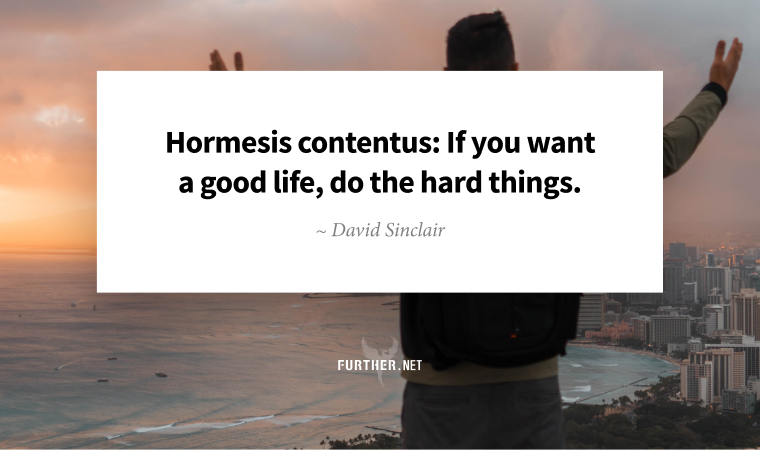
Are you stressed yet because of the impacts of aging?
If not, you should be. And no, I don’t mean that you should buy into the ageist belief that your body falls apart over time.
Instead, it’s time to start using “good stress,” known as hormetic stressors, to jolt your system into an adaptive response. Here at Further, we often talk about ways to trigger this healthspan-supporting state, like high-intensity interval training (HIIT) or intermittent fasting.
But according to mindbodygreen, an ancient practice/hormetic stressor tops 2023’s health and well-being trends: hot and cold therapy.
The Best Stress List
You’ve heard about the benefits of both heat and cold on your aching muscles. But that’s just scratching the surface of what exposure to different extremes can do for your health and longevity.
Whether you take a cold shower or sweat it out in a sauna, you’re using a short, controlled method to provoke your system into moving out of homeostasis and into hormesis.
In this state, according to the founder of Extreme Human Performance, Dr. Mike Nelson, your brain signals your body to deal with stress in productive ways, including repairing cellular damage, reducing inflammation, expelling toxins, and boosting immunity.
The takeaway is you don’t have to push really hard to see positive adaptations. If you precondition the cells or expose them to a little bit of stress, they do become bigger, better, and more adaptive to that stressor, so, therefore, your recovery should be a little bit better.
The benefits aren’t just physical, either. Both hot and cold therapy has been shown to decrease depression and improve your mood and energy. With all of these pluses, it’s not hard to warm up to the idea of regularly inducing hormesis.
Running Hot and Cold
So, what should you do if you don’t have a celeb-sized budget for an in-home infrared sauna or personal plunge tub for at-home cryotherapy?
As mentioned, using heat and cold therapy is an age-old practice that doesn’t have to be complicated or expensive. For example, you can start with a hot bath or heated blanket, or, conversely, a cold shower or wintertime ocean dip.
The key is to keep it quick: experts in heat and cold therapy, including “Iceman” Wim Hof, neuroscientist Dr. Andrew Huberman, and Dr. Mark Nelson, all say start slow with just a couple of minutes at a higher or lower temperature, and increase time/intensity from there — but no more than a few minutes at a time. As always, it’s good to check with a doctor to see what’s best and safest for you.
So there you have it: a few hot tips to help you chillax your way into a happier, healthier you.
Hot & Cold Therapy Is About To Be Accessible To The Masses: How To Get In On It (mindbodygreen)
